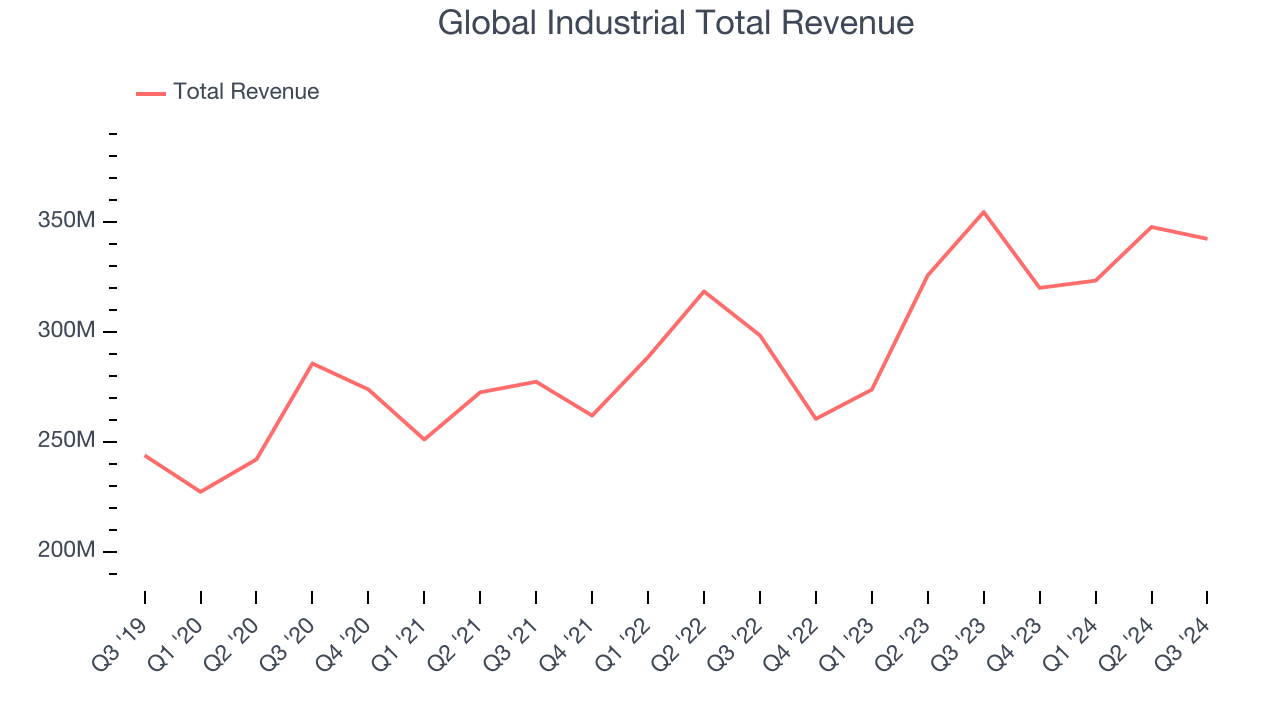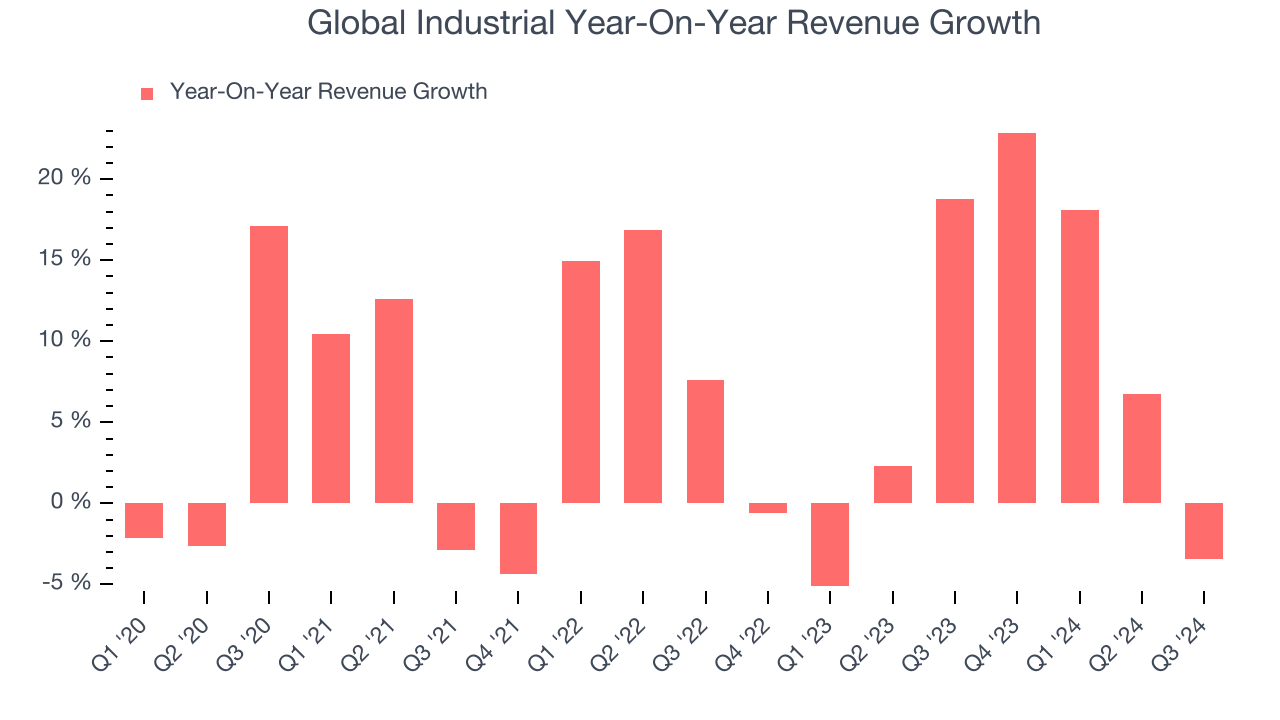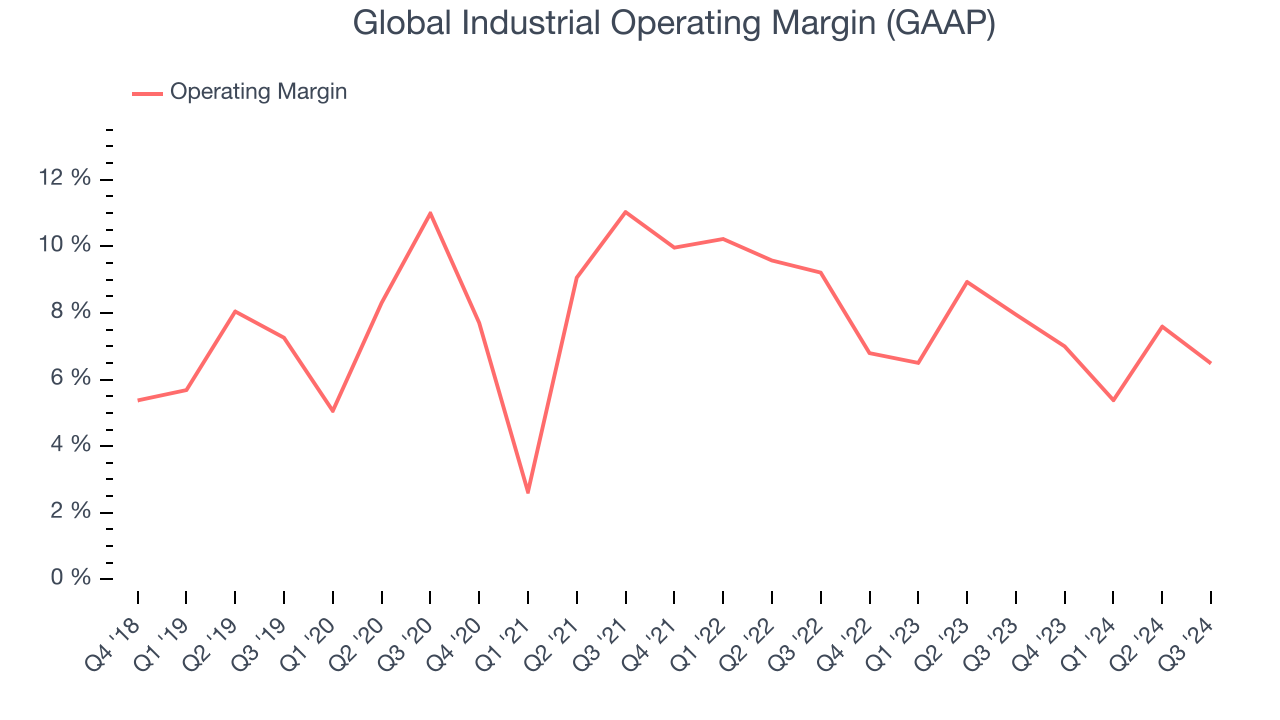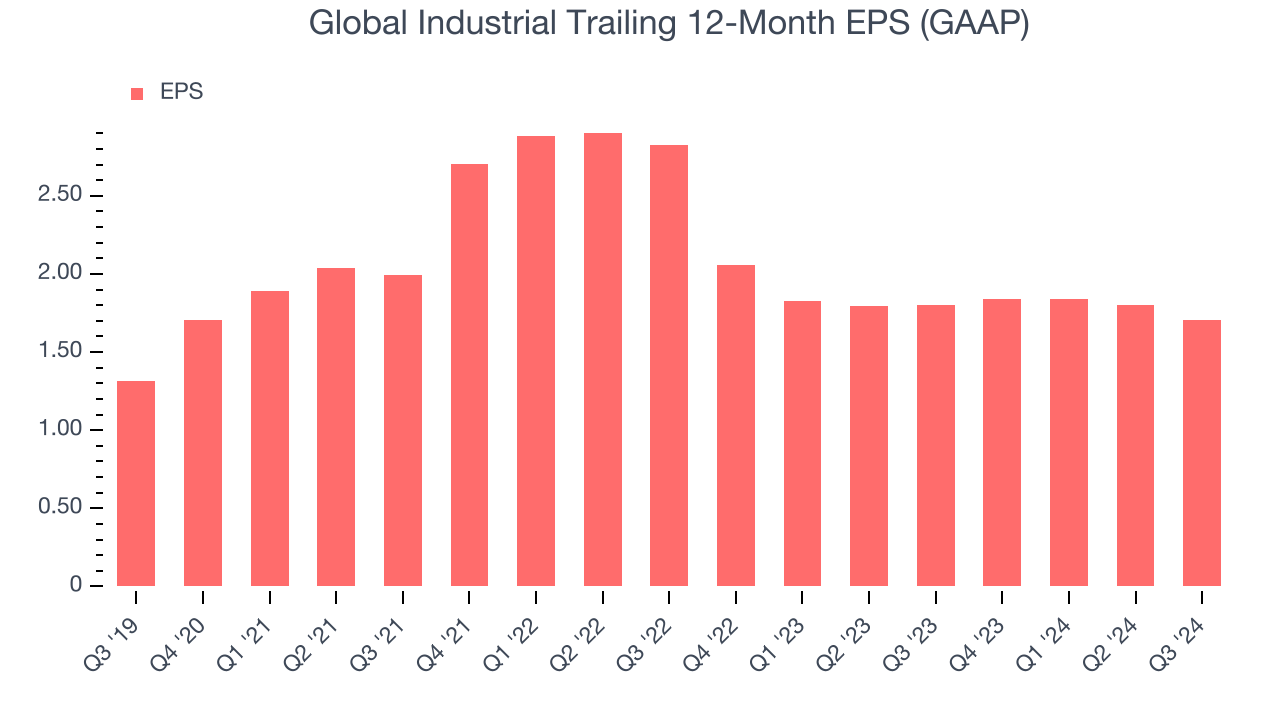
Industrial and commercial distributor Global Industrial (NYSE: GIC) fell short of the market’s revenue expectations in Q3 CY2024, with sales falling 3.4% year on year to $342.4 million. Its GAAP profit of $0.44 per share was also 23.5% below analysts’ consensus estimates.
Is now the time to buy Global Industrial? Find out by accessing our full research report, it’s free.
Global Industrial (GIC) Q3 CY2024 Highlights:
- Revenue: $342.4 million vs analyst estimates of $353.4 million (3.1% miss)
- EPS: $0.44 vs analyst expectations of $0.58 (23.5% miss)
- EBITDA: $24.2 million vs analyst estimates of $32 million (24.4% miss)
- Gross Margin (GAAP): 34%, up from 32.8% in the same quarter last year
- Operating Margin: 6.5%, down from 8% in the same quarter last year
- EBITDA Margin: 7.1%, down from 8.5% in the same quarter last year
- Free Cash Flow Margin: 2.5%, down from 10.3% in the same quarter last year
- Market Capitalization: $1.27 billion
Richard Leeds, Executive Chairman of the Board and Interim Chief Executive Officer, said, "Third quarter results reflect a weak demand environment and continued softness in our core small and medium business customer base. Our strategic account business delivered another quarter of strong growth and customer retention rates remain healthy."
Company Overview
Formerly known as Systemax, Global Industrial (NYSE: GIC) distributes industrial and commercial products to businesses and institutions.
Maintenance and Repair Distributors
Supply chain and inventory management are themes that grew in focus after COVID wreaked havoc on the global movement of raw materials and components. Maintenance and repair distributors that boast reliable selection and quickly deliver products to customers can benefit from this theme. While e-commerce hasn’t disrupted industrial distribution as much as consumer retail, it is still a real threat, forcing investment in omnichannel capabilities to serve customers everywhere. Additionally, maintenance and repair distributors are at the whim of economic cycles that impact the capital spending and construction projects that can juice demand.
Sales Growth
Reviewing a company’s long-term performance can reveal insights into its business quality. Any business can have short-term success, but a top-tier one sustains growth for years. Regrettably, Global Industrial’s sales grew at a mediocre 7.2% compounded annual growth rate over the last five years. This shows it couldn’t expand in any major way, a tough starting point for our analysis.

We at StockStory place the most emphasis on long-term growth, but within industrials, a half-decade historical view may miss cycles, industry trends, or a company capitalizing on catalysts such as a new contract win or a successful product line. Global Industrial’s annualized revenue growth of 6.9% over the last two years aligns with its five-year trend, suggesting its demand was consistently weak. 
This quarter, Global Industrial missed Wall Street’s estimates and reported a rather uninspiring 3.4% year-on-year revenue decline, generating $342.4 million of revenue.
Looking ahead, sell-side analysts expect revenue to grow 5.3% over the next 12 months, a slight deceleration versus the last two years. This projection doesn't excite us and shows the market thinks its products and services will see some demand headwinds.
Today’s young investors won’t have read the timeless lessons in Gorilla Game: Picking Winners In High Technology because it was written more than 20 years ago when Microsoft and Apple were first establishing their supremacy. But if we apply the same principles, then enterprise software stocks leveraging their own generative AI capabilities may well be the Gorillas of the future. So, in that spirit, we are excited to present our Special Free Report on a profitable, fast-growing enterprise software stock that is already riding the automation wave and looking to catch the generative AI next.
Operating Margin
Operating margin is one of the best measures of profitability because it tells us how much money a company takes home after procuring and manufacturing its products, marketing and selling them, and, most importantly, keeping them relevant through research and development.
Global Industrial was profitable over the last five years but held back by its large cost base. Its average operating margin of 7.9% was weak for an industrials business. This result is surprising given its high gross margin as a starting point.
Looking at the trend in its profitability, Global Industrial’s annual operating margin decreased by 1.8 percentage points over the last five years. The company’s performance was poor no matter how you look at it. It shows operating expenses were rising and it couldn’t pass those costs onto its customers.

This quarter, Global Industrial generated an operating profit margin of 6.5%, down 1.5 percentage points year on year. Conversely, its gross margin actually rose, so we can assume its recent inefficiencies were driven by increased operating expenses like marketing, R&D, and administrative overhead.
Earnings Per Share
We track the long-term change in earnings per share (EPS) for the same reason as long-term revenue growth. Compared to revenue, however, EPS highlights whether a company’s growth was profitable.
Global Industrial’s EPS grew at an unimpressive 5.3% compounded annual growth rate over the last five years, lower than its 7.2% annualized revenue growth. This tells us the company became less profitable on a per-share basis as it expanded.

Like with revenue, we analyze EPS over a shorter period to see if we are missing a change in the business.
For Global Industrial, its two-year annual EPS declines of 22.3% show it’s continued to underperform. These results were bad no matter how you slice the data.In Q3, Global Industrial reported EPS at $0.44, down from $0.54 in the same quarter last year. This print missed analysts’ estimates. Over the next 12 months, Wall Street expects Global Industrial’s full-year EPS of $1.70 to grow by 24.8%.
Key Takeaways from Global Industrial’s Q3 Results
We struggled to find many strong positives in these results as its revenue, EBITDA, and EPS fell short of Wall Street’s estimates. Overall, this was a softer quarter. The stock traded down 3.7% to $31.88 immediately after reporting.
Global Industrial may have had a tough quarter, but does that actually create an opportunity to invest right now?If you’re making that decision, you should consider the bigger picture of valuation, business qualities, as well as the latest earnings. We cover that in our actionable full research report which you can read here, it’s free.






